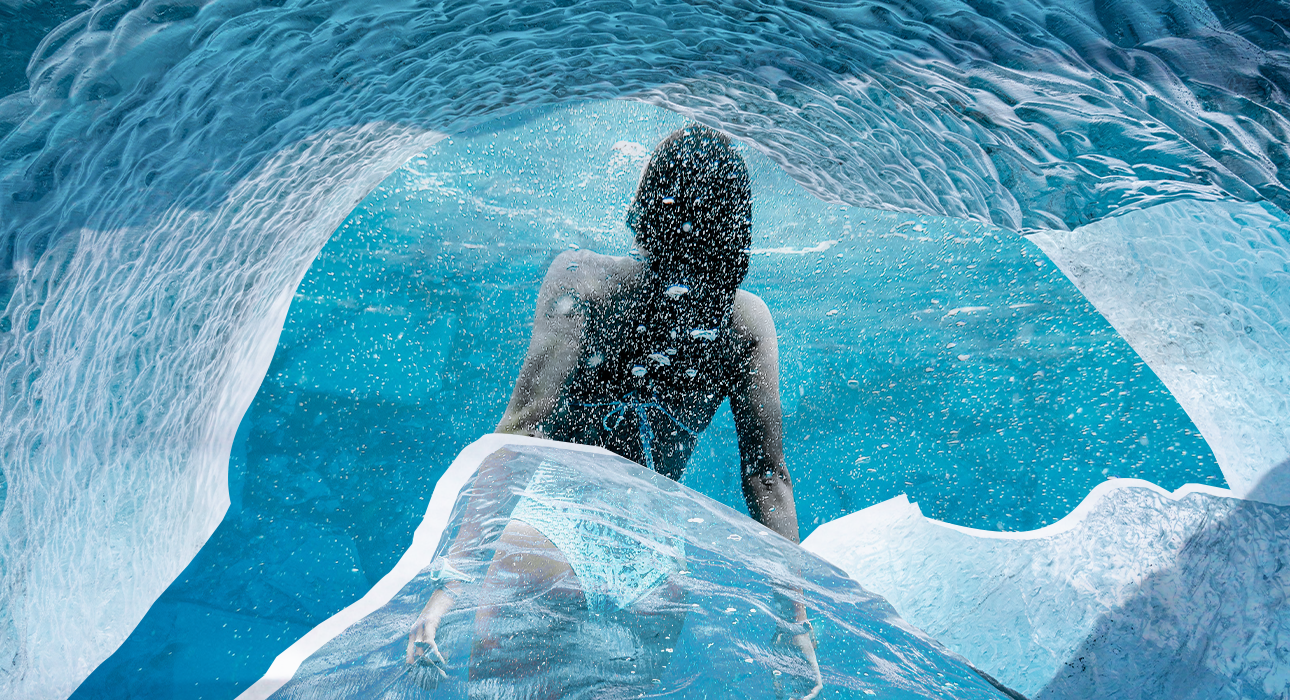In winter, people are divided into two teams. Some people want to wrap themselves in a warm blanket and not go out until spring comes. Meanwhile, we consider ourselves one of them. But there are also those who wait for winter because this is the best time to take up their favorite hobby – swimming in winter. Although the official name of this sport is winter swimming, people who practice this sport are called walruses. They share the same (super)ability with mammals living in the Arctic basin – neither is afraid of icy water.
How do walruses manage to swim in sub-zero temperatures, how did swimming in cold water become not only their hobby but also a way of life, and why does it make them happy? We decided to find out from the mouth of people who have been making walruses for several years.
Disclaimer: The material is for entertainment purposes only; You should always consult a doctor before repeating the procedures described in .

I have been interested in swimming and skiing since my childhood. At the age of 17 he entered the military medical academy, where daily physical training is mandatory for a cadet. After morning practice in the first winter, almost the entire course was covered in snow. And many years later, in 2010, I dove into an ice hole for the first time to swim at Epiphany. I’ve done this every year since. To be honest, this type of diving cannot be called winter swimming, but I was hooked. One winter, almost five years ago, my friend unexpectedly invited me to swim in the Volga. Gratuitous. I don’t know why, but I accepted. Since then, you can count on your fingers the weekends we missed and did not go swimming (not counting in the summer).
The most common opinion about swimming in winter is that it is a hardening element. But I see the real benefit in something else. A person is born with a set of reflexes aimed at preserving life. Undressing outside in winter or even diving into icy water is completely contrary to common sense. The body says: “Don’t do this! Cold! Is it dangerous!”
When you enter the water, you overcome yourself, you overcome your inner fear, you become spiritually stronger. It may seem strange, but it can be compared to parachuting.
Resistance to cold develops over time. Fear has dulled. And then your head should open. Swimming in winter should make sense because even the most skilled walruses can get sick. If you regularly become hypothermic, you can easily cause an exacerbation of any chronic disease. Also, not everyone can participate in swimming in winter. For example, I would never advise my patients suffering from cardiovascular system diseases to do this. And of course, the ice pit is not a suitable place for pregnant or breastfeeding women and young children.
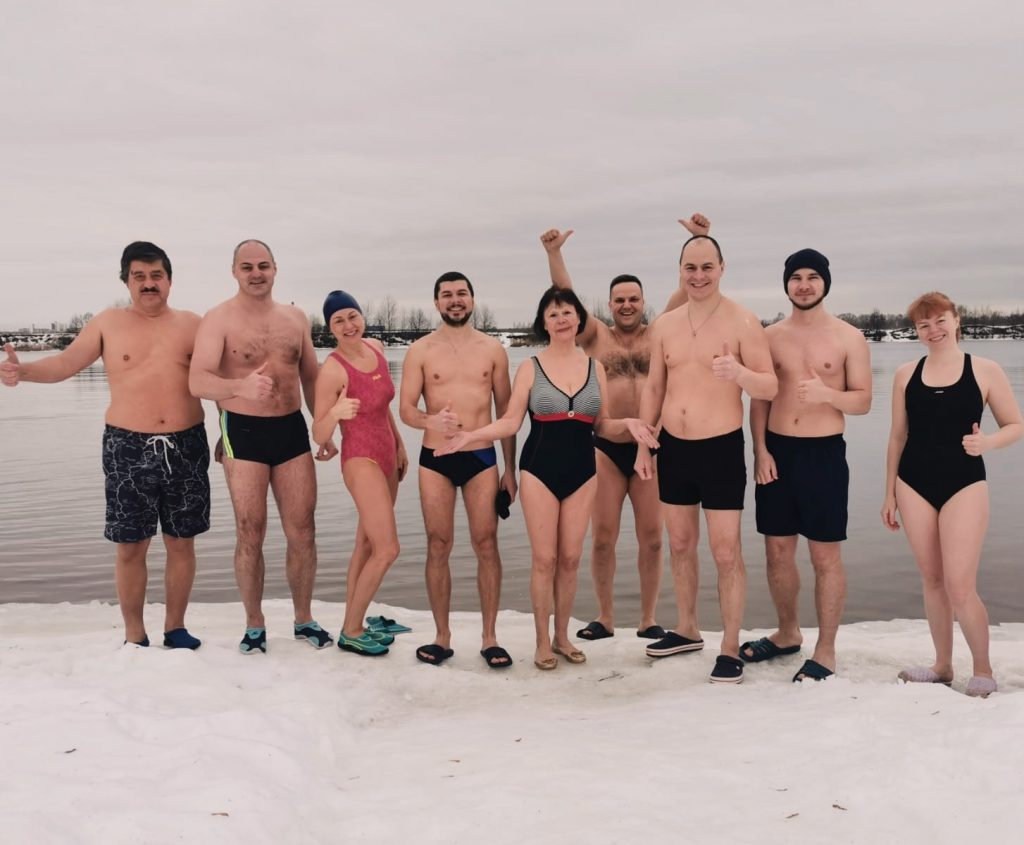
Our club has a tradition of taking group photos before entering the water. And everyone stays in the water as long as they want. Just as there are those who enter the water and immediately rush out, wrapped in a warm robe, there are also real “fierce ones” who cannot be driven to the shore in less than 20 minutes. It is very important for us to support the “newly converted”, help him warm up and share some secrets (for example, it is useful to have a shoehorn, which is very useful in the cold). Moreover, before the first dip, one must be familiar with traditional hardening. This could be a rub down with snow, a cold shower or at least a cool shower. When you come to the ice hole, you should not look at others and try to fit in with them.
It is also necessary to understand that such activities are associated with risk. First of all, in cold water the respiratory center is blocked. An unprepared person diving into icy water for the first time may lose consciousness and drown. Therefore, you need to start such a hobby in the autumn, or even better, make it a habit to swim every weekend from the end of summer. As the temperature drops, the time spent in the water will gradually decrease, but the risk will be minimized. Secondly, you cannot dive under the ice. In no case. I’ve watched many videos showing how to swim from hole to hole, but I can safely say that only a few can do it. And even these “units” have gone through many years of training.

My hobby, like many others, began with a dive into Epiphany. Then I heard “experienced” walruses enthusiastically say how useful it is to dive into icy water. To boost the morale of the athletes, they invited me to the next winter swimming competition. My 12-year-old son was swimming at the time and decided to participate in this competition. Later he and I joined the “Vyksa Walruses” hardening club. And now this year we are celebrating our fifth winter season of winter swimming.
The first dive is usually short; three to four dives for the body to feel the water. If there is snow, I lie in the snow for a few seconds and return home barefoot. The body begins to tingle as if with thousands of needles – an indescribably pleasant feeling! It is not recommended to immediately enter the heating room, you need to feel the effect of cold on the body. The second and third dives are mostly 25 or 50 meter speed and endurance swims.
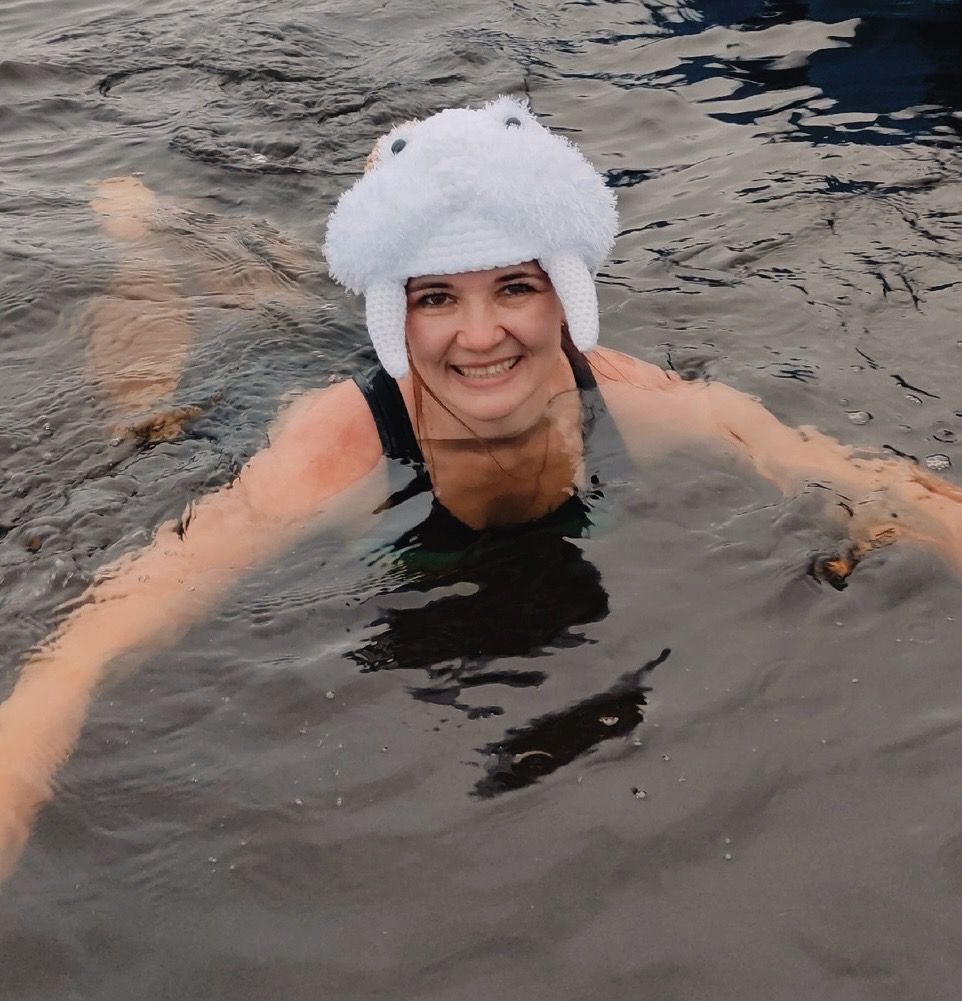
Sometimes, instead of swimming, I stand in the water for a while. Traditionally we call this exercise “Swimming” and sometimes organize an endurance battle. My personal best is four minutes. But there are walruses whose results reach 15 minutes. Another exercise we frequently practice is “Nettle”. It consists in the fact that you need to enter the water, stand or swim for a while, get out, float, perform physical exercises (jumping, running, push-ups, squats) and get into the water again. This. What you are experiencing in your body right now is described by the name itself.
In my opinion, swimming in winter has many positive aspects. It’s not just healing and hardening, it’s also a friendly community. After swimming, I find that my cheeks have a glow and my skin looks fresher. But the most important positive effect is the emotional uplift. My mood improves significantly.

I had a rough week at work in 2020 and something inside me said, “You need to go swimming.” Prior to this, he had only had a one-time experience of swimming in cold water at Epiphany. It was February, I arrived at the hut and waited for the weather to improve. A few days passed and at last complete calm prevailed. I went to the river bank alone, took a dip, and sent a video to my friends’ chat to see if anyone wanted to come with me next time. My close friend also agreed. We met him, swam, it took literally 15 seconds. After that, we began to periodically call each other and swim together. The next time he invited another friend after another, and there were already four of us. Afterwards we decided to chat for a swim and slowly it started to fill up with new members.
Each of us posted our swims on our own page on social networks, our friends wrote and asked if they could come with you, they came and never left. Our numbers gradually increased and eventually we created our own community “Dubna’s Walruses” on social networks and began to popularize winter swimming. We founded a club of the same name, it was included in the winter swimming federation of Moscow and the Moscow region. So, it can be said that our spiritual impulse led to such a collective movement and turned into something more than a hobby. There are currently approximately 30 people in our club.
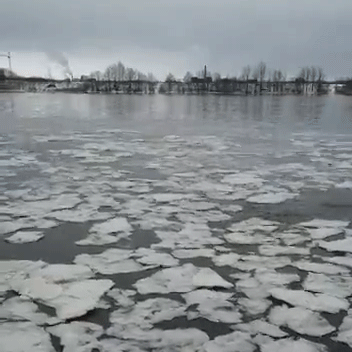
When you first get out of the cold water, it feels like your insides are burning, but the weird thing is that smile doesn’t leave your face for at least half a day. This applies to emotionally positive moments. I can’t say we didn’t freeze.
We freeze like all normal people. But you already feel much calmer because of the cold.
There are situations when it is windy outside and your feet start to freeze. But we found a way out of this situation – everyone takes a bottle of hot water with them and pours it on their hands and feet to warm up.
We used to run into the water for 10-15 seconds, but now most of us can stand for 3-5 minutes. And no one gets sick. This has a positive effect on blood vessels and veins. While we can exercise the body’s muscles through various exercises, veins and blood vessels cannot do this. Immersion in cold water also contributes to this – when cooled, the vessels narrow and then expand. But of course, before you start swimming in winter, it is better to go to the doctor and check if you have any contraindications.
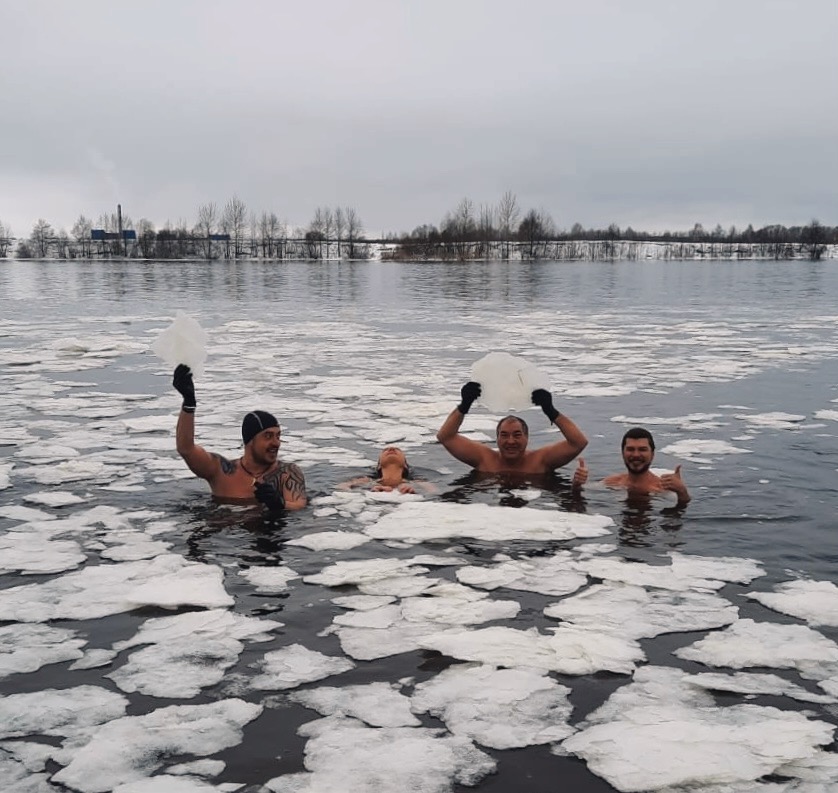
Speaking of contraindications, perhaps the main rule of swimming in winter is never to swim alone and never try to do anything against your body. Beginners want to prove themselves, exaggerate their strength, stay in the water longer than necessary, and after that they lose all desire. Therefore, it is important, firstly, to have an experienced person with you, and secondly, to feel your body very clearly. And in this case it is better to leave the race as soon as possible.
Also, of course, you need to be sober, rest well, not come on an empty stomach (so that your body has energy), and have comfortable, warm clothes with you that you can put on quickly after taking a bath and drying off. No skinny jeans, lace-up sneakers or light jackets. In order not to waste time on lacing, this should be comfortable clothes similar to ski clothes and comfortable shoes similar to felt boots.

One year, on the first of January, I decided to start a “new life” by swimming in an ice hole. And I loved it. Now this has become my full-time hobby.
I usually warm up my muscles before getting in the water; I do some exercise, do a few exercises or go for a short run on the beach. I always find myself in the water in a different way. In autumn, when the water temperature is 10-12 degrees, it usually lasts 10-15 minutes, and in winter, when the water temperature is 2-4 degrees, it does not exceed 5-7 minutes. The important thing is to always listen to your body and not compare yourself with other walruses.
And of course, follow safety precautions to prevent accidents. As a precaution: do not swim in an unfamiliar place in winter, do not swim alone, do not dive in winter (for me personally), after swimming, be sure to wear warm, dry clothes and hot tea to prevent hypothermia.
Winter swimming is, of course, a winter topic, but it is better to start preparing for the season in the autumn – from the end of September – October (depending on the weather). The water gradually cools by about 1-2 degrees per week. The body adapts to the winter period and gets used to cold water.

It all started in the spring of 2020. There was coronavirus, my friends invited me to dive, so I looked at them and ran into the water.
The water temperature was around +10 degrees and I flew up the river like a mushroom, cursing my friends. But he came again the next day.
I liked the feeling afterwards: joy, cheerfulness and lightness. Since then it has become my hobby.
I swim all year round now. In winter – outside, and in summer – in a cold bath. But this is not the same at all – tap water is +15 degrees, so there is no such excitement of overcoming the fear of cold, entering icy water or the feeling of having done it. Every winter while swimming you actually fall overboard and force yourself into the icy water; not everyone can do this.
Therefore, the most difficult thing is moral preparation. In winter, water is usually warmer than the air, but in strong winds it’s really cold to go out. To overcome this, you need to take a thermos of tea with you and drink it. Some walruses carry hot water with them in plastic bottles, and in winter they pour warm water on their hands and feet to make it easier to get dressed after swimming. And of course, do it with like-minded people.
Source: People Talk
Errol Villanueva is an author and lifestyle journalist who writes for The Fashion Vibes. With a passion for exploring the latest trends in fashion, food, travel, and wellness, Errol’s articles are a must-read for anyone interested in living a stylish and fulfilling life.

